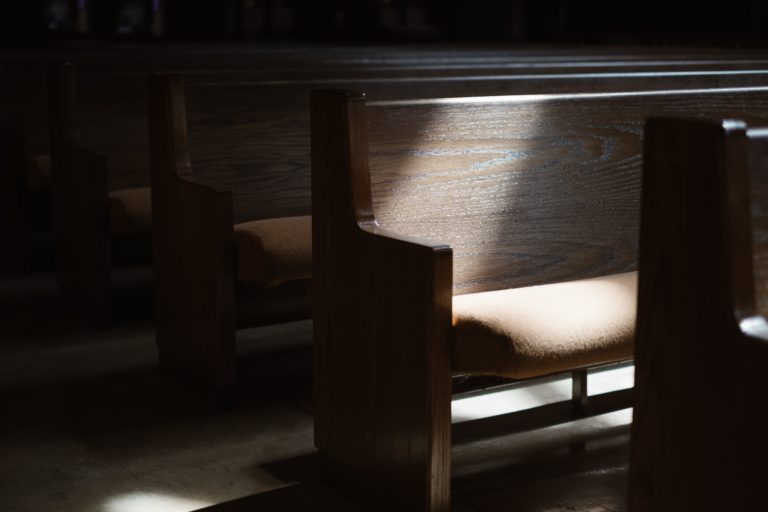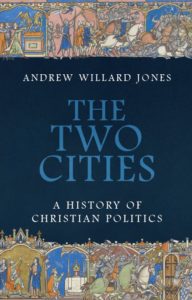By Andrew Jones
Andrew Willard Jones is the Director of Catholic Studies at Franciscan University of Steubenville. He is the author of Before Church and State: A Study of Social Order in the Sacramental Kingdom of St. Louis IX and a founding editor of the journal New Polity.

In 1960 the Church was paradoxically both aware that Western civilization was, by and large, no longer Christian and optimistic about the “natural law” tendencies within liberal democracy. Many within the Church knew that the world had to be evangelized; they understood the emptiness that haunted a great deal of popular piety. Many Christians could feel intuitively that something was deeply wrong in the Church, that many of the faithful were “going through the motions,” that somewhere along the line, the passion, drama, and excitement of a life truly in and through Christ had been lost. And yet, this pessimism was offset by an optimistic appraisal of the moral qualities of the liberal West. To many, the democracies seemed close to a true conversion. It seemed that they were coming to believe in many of the truths of Christianity, such as universal human dignity, through their own secular path. What was needed, it seemed to many, was for Christianity to be re-presented, to be “updated.”
This was the background for Pope John XXIII’s calling for a Second Vatican Council. When the council opened in 1962 with over 2,500 cardinals, bishops, and abbots in attendance, it became clear that many, maybe most, of the assembled fathers had nouvelle théologie sympathies—that is, they wanted to go back to the sources of the Church Fathers and Scripture. For Catholics today, this might come as a surprise. But the documents of the Council are far different from the “spirit” of the Council.
The first document promulgated by the council was Sacrosanctum Concilium, “On the Sacred Liturgy.” This liturgical reform movement maintained that the people should participate actively in the liturgy, and that things had been different in the past and so could be different in the future. This was indeed true. In the High Middle Ages, for example, the people’s Mass was a loud, interactive affair, with the people singing the responses and sometimes displaying an almost pentecostal experience of the Holy Spirit. The modern Low Mass, on the other hand, had developed as a private Mass for priests to say by themselves. It was widely recognized by 1960 that its use as the people’s Mass was in need of reform. Theologically, the centrality of the liturgical act to the life of faith was becoming more and more prominent, especially as modern anthropology and sociology demonstrated the profound importance of ritual to all systems of meaning. By 1960, many people had become aware that modern Catholic theology’s tendency to emphasize propositions of the faith over actions of worship and prayer owed a great deal to Protestant influence and the influence of modern, rationalist philosophies. All of this animated the liturgical reform movement.
Sacrosanctum Concilium embraced this desire for liturgical reform but did so in a moderate manner. It also called for more use of the vernacular and more sensitivity to local cultures.
But, at the same time, it mandated that Latin remain the primary language of the liturgy and that Gregorian chant, a medieval musical tradition, retain pride of place. There had been many modest liturgical reforms in the long history of the Church, and a reasonable reading of Sacrosanctum Consilium would have predicted a similar reform. It simply did not call for dramatic changes in the liturgical celebration itself.
However, after the Council, theologians split into two camps, and they disagreed profoundly over the interpretation of the Council.
The side in favor of the “Spirit of Vatican II,” as it developed in the years immediately after the council, was a spirit of innovation, a spirit of movement into modernity. At its most simplistic, this impulse was embarrassed by all things old and traditional and enamored with all things modern, new, or experimental. Pretending to be for the common people, it was, in fact, often profoundly elitist, supposing that the pieties that the simple faithful had lived for hundreds of years were misguided and a waste of time and could be suppressed or replaced with the creations of elite “experts.” In the immediate aftermath of the Council, one can perceive, in some corners of Church leadership, an almost iconoclastic glee in the aggressive destruction of the “old” ways of being a faithful Catholic. To the innovators, those scandalized by the destruction needed to “get with the times,” needed to fall into line.
The Council had called for greater participation of the laity in the Mass. It had envisioned a greater use of the vernacular within a still-Latin liturgy. It had envisioned, in short, a reform of the Mass that reflected an ecclesiology of communion and mission.
While it is debatable whether the new missal that was promulgated after the council went too far in its restructuring of the ancient rite along these lines, it is undeniable that a real break with tradition occurred in how the new liturgy was implemented in the parishes. Almost overnight, the Mass shifted from a high-culture experience of spiritual gravitas to a mundane experience of low-culture “togetherness.” Not without a degree of cultural snobbery, the Catholic author Evelyn Waugh opined, “The Mass is no longer the Holy Sacrifice but the Meal at which the priest is the waiter. The bishop, I suppose, is the head waiter.”
The theology that underpinned the council had imagined the Mass transitioning from a highly specialized transaction between the priest and God to a true event of sacramental communion, a communion both horizontal, among the faithful, and vertical, between the faithful and God. In the implementation of this vision, however, the vertical and sacramental aspects, which had been so heavily present in the old Mass, were often nearly completely lost in favor of horizontal “community building,” of “meeting people where they were” and more or less leaving them there.
The typical folk Mass of the 1970s was unrecognizable to those who had experienced the High Mass of the 1950s. It was experienced by the normal faithful as a hard break, and many, many Catholics stopped coming to Mass.
You Might Also Like
In The Two Cities: A History of Christian Politics, Andrew Willard Jones rewrites the political history of the West with a new plot, a plot in which Christianity is true, in which human history is Church history. It advances a theory of Christian politics that is both an explanation of secular politics and a proposal for Christians seeking to navigate today’s most urgent political questions.
